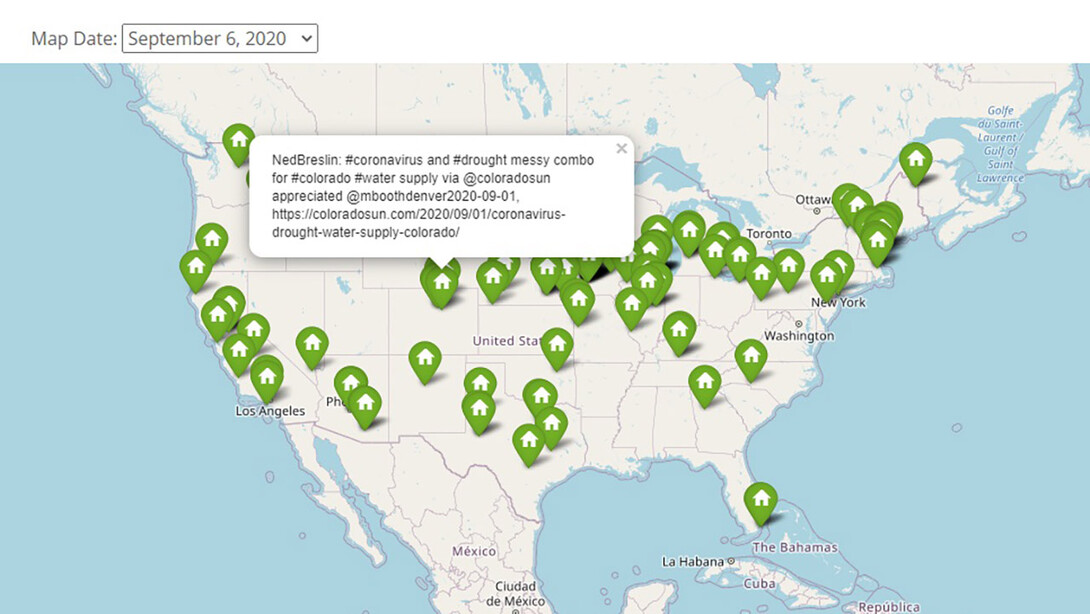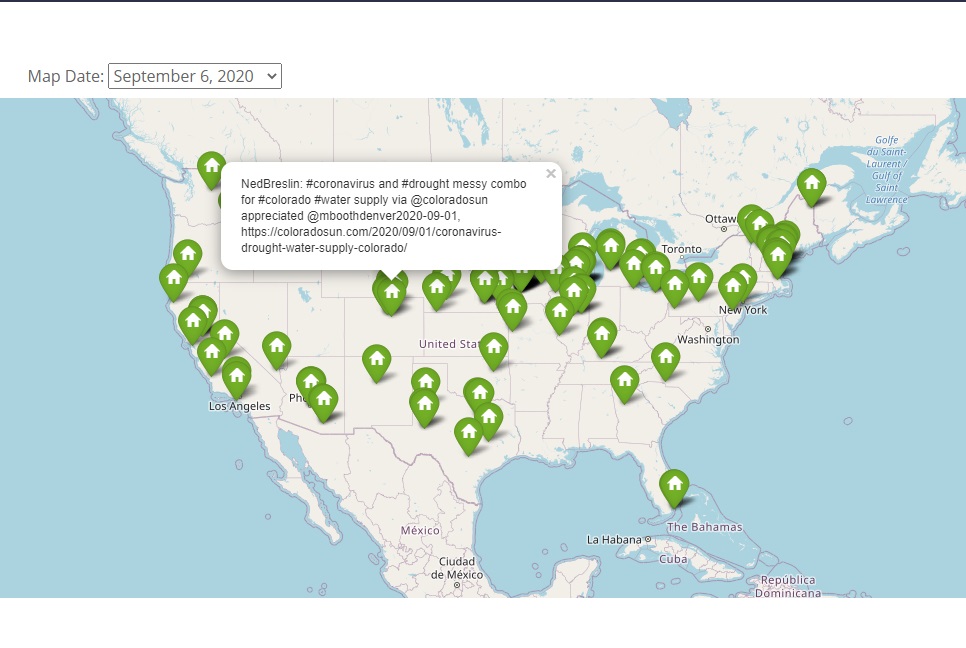
Millions use Twitter to share their rapid-fire opinions, observations and connections to real-time events. And natural disasters are often major conversation starters. With that in mind, National Drought Mitigation Center assistant director Kelly Helm Smith wanted to see what tweets said about the impacts of drought, and whether tweets could contribute to a drought early warning system.
Smith embarked on a pilot study, the results of which were recently published in the Bulletin of the American Meteorological Society. She developed a method to monitor the rate of tweets about drought over time, state-by-state, allowing her to detect when #drought tweets unexpectedly surge. Tweets, as a measure of fluctuating attention, could contribute to a drought early warning system. In the process, Smith examined two years’ worth of drought tweets, with conversations ranging from agricultural to cultural, in different parts of the country.
“Barely made it to stubble-high by the 4th of July” one Plains state farmer tweeted in the midst of a fast-moving flash drought in summer 2017.
“CA had a great winter but the drought has left an indelible mark on our water use psyche,” a California agency tweeted, even as the state emerged from a multi-year drought.
The National Drought Mitigation Center, housed in the University of Nebraska–Lincoln’s School of Natural Resources, has monitored news stories for drought impacts since 2005. Smith said monitoring social media for evidence of drought impacts is in some ways an extension of that effort, and that her work came about in response to state climatologists and others asking about ways to search and archive drought tweets.
“A lot of hazard researchers are trying to figure out what we can learn from social media,” Smith said. “Social media has a real role to play in both assessing the extent and impacts of disasters and in warning people about disasters. Seismologists, for example, report that social media sometimes provides faster earthquake notifications than seismographs.”
Along with conducting research on drought impacts and planning, Smith is the drought center’s communications coordinator. Each Thursday, the center tweets the latest U.S. Drought Monitor, a map that shows the latest drought conditions across the U.S. and its territories. It leads to a lot of chatter, and Smith’s study confirmed that the number of drought tweets is highest on Thursdays.
The drought search term, Smith said, is a noisy one. Sports teams endure championship droughts. The lovelorn weather romantic droughts. Smith’s system searched for tweets that featured hashtags such as #drought, #NEdrought or #drought17 to limit results to more relevant conversations. Many Twitter-savvy farmers used hashtags with the year included — #drought17, #drought2018 — to tell the world what they were experiencing. Those tweets often provided original information, such as video shot from the back of a tractor or descriptions of field conditions.
“Just as no single hydrometeorological indicator is considered sufficient to capture all aspects of drought, #drought tweets are one more metric to consider, and represent a real addition to quantifiable drought impact data,” Smith wrote in the study. “Drought tweets reflect needs and interests identified by agencies and organizations involved in water and drought management, as well as on-the-ground experiences of agricultural producers and others whose lives and livelihoods are affected by drought. Tweets are a measurement of drought impact, even when the impact is primarily an awareness of a problem that may require attention.”
One of the original employees when the National Drought Mitigation Center opened in 1995, Smith started her working life as a newspaper reporter and public relations professional. She later earned a degree in community and regional planning and recently completed a doctoral degree in human dimensions of natural resources.
Though the study is published, the work is ongoing and will include exploration of larger Twitter searches. Meanwhile, on Mondays, Smith emails a map of the past week’s #drought tweets to a listserv of drought experts and state climatologists.
Co-authors of the article are Drew Tyre, quantitative ecologist in the School of Natural Resources; Zhenghong Tang, professor and director of the Community and Regional Planning program at Nebraska; Mike Hayes, climatologist in the School of Natural Resources; and Adnan Akyuz, North Dakota state climatologist. Tweet collection has been partially supported by the U.S. Department of Agriculture.
The study is available at the Bulletin of the American Meteorological Society website.








